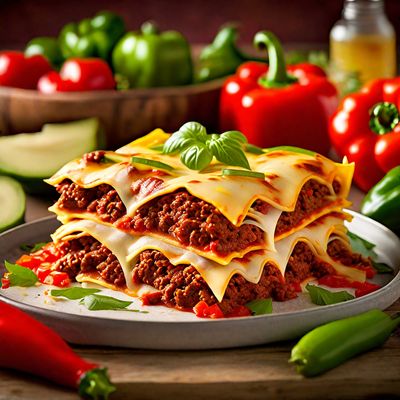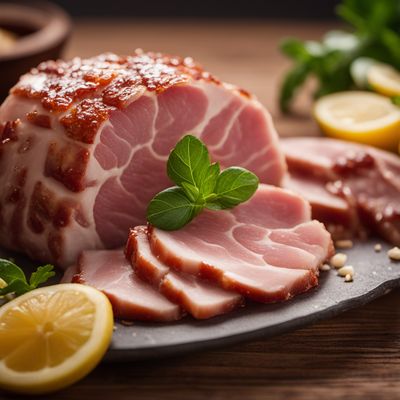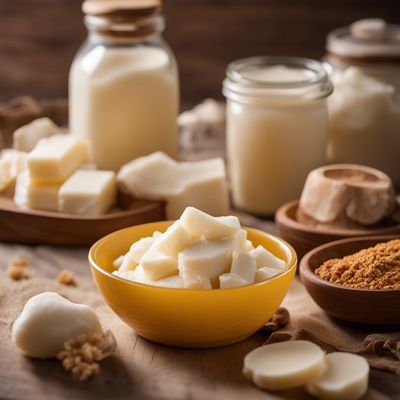
Ingredient
Beef tallow (including processed suet)
Liquid Gold: The Versatile Beef Fat
Beef tallow is a creamy, off-white fat with a smooth texture and a rich, savory flavor. It has a high smoke point, making it ideal for frying and sautéing. Its solid consistency at room temperature allows it to be used as a substitute for butter or oil in baking, resulting in tender and flavorful pastries. Beef tallow is often used in traditional dishes like Yorkshire pudding and is a staple in many cuisines around the world.
Origins and history
Beef tallow has a long history dating back to ancient times when it was commonly used for cooking and preserving food. It has been a staple in many traditional cuisines, including British, French, and Mexican. In the past, beef tallow was also used for making candles and soap. Today, it is still valued for its culinary applications and is often used in traditional dishes and recipes.
Nutritional information
Beef tallow is a good source of vitamin E and contains healthy monounsaturated fats. It is also rich in conjugated linoleic acid (CLA), which has been associated with various health benefits, including reduced inflammation and improved heart health. However, it is high in saturated fat and should be consumed in moderation.
Allergens
Beef tallow may contain allergens such as beef proteins, which can cause allergic reactions in individuals with beef allergies. It is important to read labels and check for any potential allergens before consuming products containing beef tallow.
How to select
When selecting beef tallow, look for a product that is pure and free from any additives or preservatives. It should have a creamy color and a pleasant, mild aroma. If purchasing from a butcher, ask for tallow that has been rendered from high-quality beef fat. If buying packaged tallow, check the ingredient list to ensure it contains only beef fat and no other additives.
Storage recommendations
To maintain its freshness and quality, store beef tallow in an airtight container in a cool, dark place, such as a pantry or refrigerator. Properly stored, beef tallow can last for several months. If you live in a warm climate, it is recommended to store beef tallow in the refrigerator to prevent it from melting or becoming rancid.
How to produce
Beef tallow can be produced by rendering beef fat at home. Start by obtaining high-quality beef fat from a butcher or a trusted source. Trim away any excess meat or connective tissue, then cut the fat into small pieces. Place the fat in a heavy-bottomed pot and heat it over low heat until it melts completely. Strain the liquid fat through a fine-mesh sieve or cheesecloth to remove any impurities. Allow the tallow to cool and solidify before transferring it to a container for storage.
Preparation tips
Beef tallow can be used in a variety of ways in the kitchen. It is commonly used for frying and sautéing due to its high smoke point, which allows for crisp and flavorful results. Beef tallow can also be used as a substitute for butter or oil in baking, adding a rich and tender texture to pastries and bread. Additionally, it can be used to make homemade beef tallow candles or soap.
Culinary uses
Beef tallow is widely used in traditional dishes and cuisines around the world. It is a key ingredient in British Yorkshire pudding, French confit, and Mexican refried beans. It is also used in the production of traditional British mincemeat and Scottish haggis. In modern cuisine, beef tallow is often used by chefs to add depth and flavor to dishes, such as roasted vegetables or seared steaks.
Availability
Beef tallow is commonly available in regions where beef is consumed, including North America, Europe, and parts of Asia. It can be found in grocery stores, butcher shops, and specialty food stores. In some regions, it may be more readily available in rendered form, such as beef dripping or beef lard.
More ingredients from this category
Recipes using Beef tallow (including processed suet)

French-style Lasagne
La Délicieuse Lasagne Française

Penne with Slow-Cooked Meat Sauce
Hearty Italian Penne: A Slow-Cooked Meat Sauce Delight

Figgy Duff with Maple Sauce
Maple-infused Figgy Duff: A Canadian Delight

Caribbean-style Lasagne
Tropical Twist Lasagne

Traditional Scottish Skirlie
Hearty Scottish Skirlie: A Savory Delight from the Highlands


